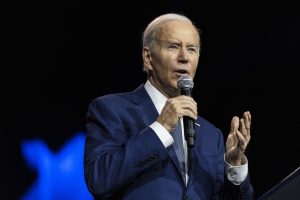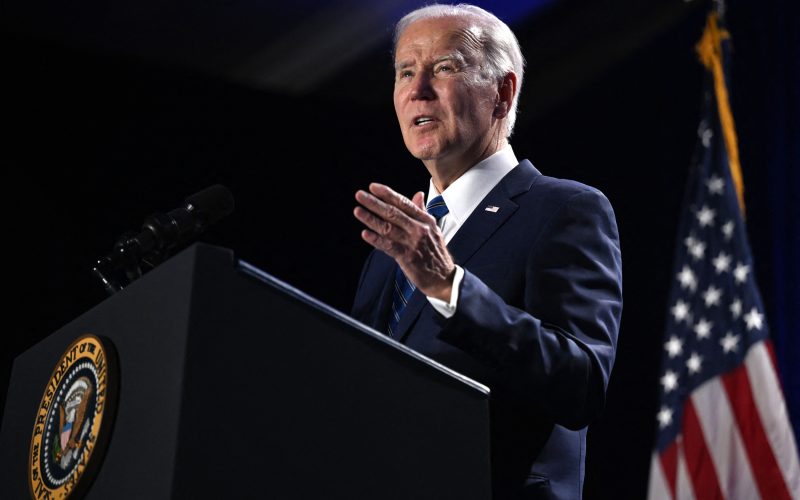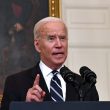The relationship between the United States and Saudi Arabia has always been of significant geopolitical importance, heavily influenced by energy interests, regional security, and economic ties. However, this relationship has seen its ups and downs, particularly with the election of President Joe Biden in 2020. Initially marked by tension due to Biden’s criticism of Saudi human rights practices and the murder of journalist Jamal Khashoggi, the bilateral relationship has gradually improved. This article delves into the strategic maneuvers by Saudi Arabia to mend ties with the Biden administration, analyzing the motivations, actions, and implications of this diplomatic effort.
Initial Tensions and Criticism

Upon taking office, President Biden faced a complex and delicate situation with Saudi Arabia. During his campaign, Biden vowed to make Saudi Arabia a “pariah” state due to its human rights record and the brutal killing of Jamal Khashoggi, which U.S. intelligence agencies attributed to Saudi Crown Prince Mohammed bin Salman (MBS). The Biden administration took several steps that underscored this critical stance:
- Public Condemnation: Biden publicly criticized Saudi Arabia’s human rights violations.
- Release of Intelligence Report: The U.S. declassified an intelligence report implicating MBS in Khashoggi’s murder.
- Weapon Sales Freeze: The administration temporarily halted arms sales to Saudi Arabia to reassess the transactions.
These actions sent a clear message of disapproval, creating significant friction between the two nations.
Strategic Shifts by Saudi Arabia
In response to this strained relationship, Saudi Arabia embarked on a strategic campaign to restore its ties with the U.S. Several key actions and policy shifts helped bridge the gap:
Human Rights Reforms
Saudi Arabia began to implement and publicize reforms aimed at improving its human rights image. While these reforms were seen by many as surface-level, they included:
- Judicial Reforms: Announcements of changes to the judicial system, including limitations on the use of the death penalty.
- Women’s Rights: Lifting some restrictions on women’s rights, such as allowing women to drive and easing guardianship laws.
Diplomatic Engagement
Saudi Arabia intensified its diplomatic efforts to directly engage with U.S. officials and influence public opinion. This included:
- Lobbying: Increased lobbying efforts in Washington, D.C., aiming to highlight Saudi Arabia’s role as a stabilizing force in the Middle East.
- Direct Dialogue: High-level meetings between Saudi officials and key figures in the Biden administration to discuss mutual interests and concerns.
Regional Stabilization Efforts
Understanding the Biden administration’s focus on reducing conflict in the Middle East, Saudi Arabia took steps to position itself as a key player in regional stability:
- Ceasefires in Yemen: Saudi Arabia announced a ceasefire in the Yemen conflict, responding to U.S. calls for an end to the war.
- Normalization with Israel: Facilitating normalization agreements between Israel and several Arab countries, known as the Abraham Accords, which the U.S. supports.
Economic and Energy Cooperation
Energy has always been a cornerstone of the U.S.-Saudi relationship. Recognizing this, Saudi Arabia leveraged its position in global energy markets:
Oil Production Adjustments
Saudi Arabia adjusted its oil production policies in response to global market conditions, a move that helped stabilize global oil prices and demonstrated its cooperative stance:
- OPEC+ Coordination: Working closely with OPEC+ to manage oil production cuts and increases, balancing the market and aiding global economic recovery post-COVID-19.
- Energy Partnerships: Exploring new energy partnerships with U.S. companies, particularly in renewable energy and technology.
Investment Initiatives
Saudi Arabia launched several large-scale investment initiatives aimed at attracting American businesses and fostering economic ties:
- Saudi Vision 2030: Promoting the Vision 2030 plan, which seeks to diversify the Saudi economy and create opportunities for U.S. investors.
- Joint Ventures: Establishing joint ventures with American firms in various sectors, including technology, defense, and infrastructure.
Geopolitical Alignment
Saudi Arabia also aligned its geopolitical strategies with U.S. interests, focusing on shared concerns such as counterterrorism and regional adversaries:
Counterterrorism Cooperation
Reaffirming its commitment to counterterrorism, Saudi Arabia continued its cooperation with U.S. intelligence and military operations targeting extremist groups in the region.
Stance on Iran
Saudi Arabia maintained a strong stance against Iran, aligning with U.S. efforts to contain Iranian influence in the Middle East. This included:
- Security Partnerships: Strengthening security partnerships with other Gulf Cooperation Council (GCC) members and the U.S.
- Regional Alliances: Supporting U.S.-led initiatives to counter Iranian-backed militias and proxies in countries like Iraq, Syria, and Lebanon.
The Outcome: Restored Relations
Through these multifaceted strategies, Saudi Arabia successfully navigated the complexities of its relationship with the Biden administration. The outcomes of these efforts included:
Reinstated Arms Sales
The U.S. resumed arms sales to Saudi Arabia, reflecting a renewed confidence in the bilateral defense partnership.
Diplomatic Engagement
There was an increase in high-level diplomatic engagements, with visits from U.S. officials to Saudi Arabia and vice versa, signaling a normalization of relations.
Economic Agreements
Several new economic agreements were signed, reinforcing the economic interdependence between the two countries.
Analysis Table
| Strategy | Actions Taken | Impact |
|---|---|---|
| Human Rights Reforms | Judicial reforms, women’s rights improvements | Improved international image, eased some U.S. concerns |
| Diplomatic Engagement | Increased lobbying, high-level meetings | Direct communication, better mutual understanding |
| Regional Stabilization | Ceasefires in Yemen, support for Abraham Accords | Positive regional influence, alignment with U.S. interests |
| Energy Cooperation | OPEC+ coordination, new energy partnerships | Stabilized oil markets, demonstrated economic cooperation |
| Investment Initiatives | Promotion of Vision 2030, joint ventures with U.S. firms | Attracted American investment, diversified economic ties |
| Geopolitical Alignment | Counterterrorism cooperation, strong stance on Iran | Strengthened security ties, aligned regional strategies |
Comparative Table
| Aspect | Trump Administration | Biden Administration |
|---|---|---|
| Human Rights Approach | Less focus on human rights issues | Strong emphasis on human rights and criticism |
| Arms Sales Policy | Continued and expanded arms sales | Initial freeze, later resumed |
| Diplomatic Engagement | Close personal relationship between Trump and MBS | Professional, strategic engagement |
| Regional Security | Support for Saudi-led coalition in Yemen | Pressure for ceasefire and peace talks |
| Energy Cooperation | Strong collaboration on oil production policies | Cooperation with a focus on global market stability |
| Economic Ties | Encouraged investments, less focus on diversification | Support for Vision 2030 and economic diversification |
| Geopolitical Strategy | Confrontational stance on Iran, strong bilateral security ties | Continued strong stance on Iran, increased regional partnerships |
Conclusion
Saudi Arabia’s strategic efforts to win back the Biden administration highlight the complexities and intricacies of international diplomacy. By addressing human rights concerns, enhancing diplomatic engagement, aligning with U.S. regional policies, and reinforcing economic and energy cooperation, Saudi Arabia successfully navigated the initial tensions. This restored relationship underscores the enduring importance of Saudi Arabia in U.S. foreign policy and the multifaceted nature of international relations in a rapidly changing global landscape.












